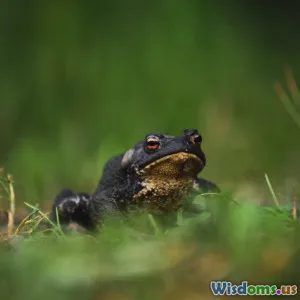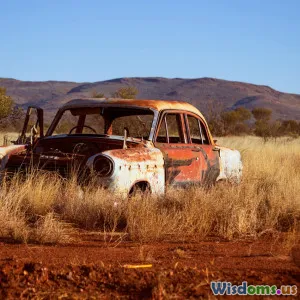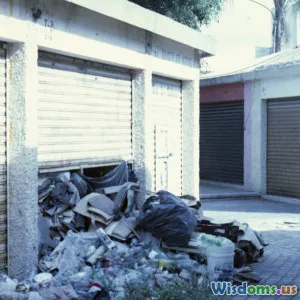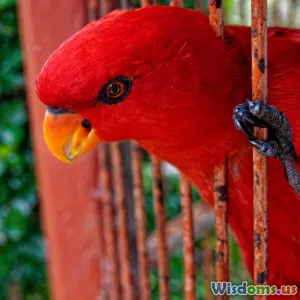
Habitat Loss and Its Consequences
6 min read Explore the impact of habitat loss on biodiversity and ecosystems, uncovering its far-reaching consequences for the animal kingdom. (0 Reviews)
Habitat Loss and Its Consequences
Habitat loss is one of the most critical environmental issues facing our planet today. As human populations continue to grow and expand, the natural habitats of countless species are increasingly being converted for agricultural, urban, and industrial use. This article explores the causes of habitat loss, its significant consequences for the animal kingdom, and potential conservation strategies to mitigate its effects.
Understanding Habitat Loss
Habitat loss occurs when natural environments are destroyed or altered to the point where they can no longer support the species that depend on them. This alteration can happen in various ways, including:
- Deforestation: The clearing of forests for timber, agriculture, or urban development.
- Wetland Drainage: Converting wetlands into agricultural land or urban areas.
- Urbanization: The expansion of cities leading to the destruction of local ecosystems.
- Agricultural Expansion: The conversion of natural landscapes into farmland.
According to the World Wildlife Fund (WWF), approximately 75% of the Earth's land surface has been altered by human activity, leading to severe consequences for biodiversity.
Consequences of Habitat Loss
The impact of habitat loss extends beyond the immediate destruction of plant and animal life. Here are some of the most significant consequences:
1. Biodiversity Decline
Habitat loss is a primary driver of biodiversity decline. Species that rely on specific habitats for food, shelter, and breeding are particularly vulnerable. As habitats shrink, populations can become isolated, reducing genetic diversity and increasing the risk of extinction. The IUCN Red List highlights that over 28,000 species are currently threatened with extinction, many due to habitat loss.
2. Disruption of Ecosystem Services
Ecosystems provide essential services that benefit humans and wildlife alike. These include air and water purification, pollination of crops, and climate regulation. When habitats are destroyed, these services are compromised. For example, the loss of wetlands reduces natural water filtration, leading to increased flooding and water quality issues.
3. Altered Species Interactions
Habitat loss can disrupt the intricate relationships between species within an ecosystem. Predators may struggle to find prey, while herbivores may face food shortages. This disruption can lead to cascading effects throughout the food web, resulting in unbalanced ecosystems that can collapse.
4. Increased Human-Wildlife Conflict
As natural habitats shrink, wildlife is often pushed into closer contact with human populations, leading to increased conflicts. Animals may raid crops or livestock, leading to retaliatory killings by farmers. This conflict not only threatens wildlife but can also impact agricultural livelihoods.
5. Climate Change Vulnerability
Habitat loss also exacerbates climate change impacts. Natural habitats such as forests and wetlands play a crucial role in carbon sequestration. When these areas are destroyed, not only is the stored carbon released back into the atmosphere, but the capacity to absorb future carbon emissions is also diminished.
Conservation Strategies
Addressing habitat loss requires a multifaceted approach, including:
1. Protected Areas
Establishing protected areas is essential for conserving biodiversity. National parks, wildlife reserves, and marine protected areas can safeguard critical habitats and provide refuges for endangered species.
2. Sustainable Development
Implementing sustainable land-use practices can help balance economic development with environmental conservation. This includes promoting agroforestry, sustainable agriculture, and responsible urban planning.
3. Restoration Projects
Restoring degraded habitats can help revive ecosystems and support wildlife populations. Reforestation, wetland restoration, and habitat corridors can enhance connectivity between fragmented habitats, allowing species to thrive.
4. Community Engagement
Engaging local communities in conservation efforts is crucial. By promoting awareness and providing incentives for conservation, communities can play an active role in protecting their local environments.
5. Policy and Legislation
Strong environmental policies and legislation are vital for regulating land use and protecting habitats from destruction. Advocacy for wildlife protection laws and sustainable practices can help ensure that future generations inherit a healthy planet.
Conclusion
Habitat loss is a pressing issue that poses significant threats to biodiversity and ecosystem health. Understanding its causes and consequences is essential for developing effective conservation strategies. By working together—across communities, governments, and organizations—we can combat habitat loss and protect the incredible diversity of life on our planet. Our actions today will determine the future of countless species and the ecosystems they inhabit.
Rate the Post
User Reviews
Popular Posts




















